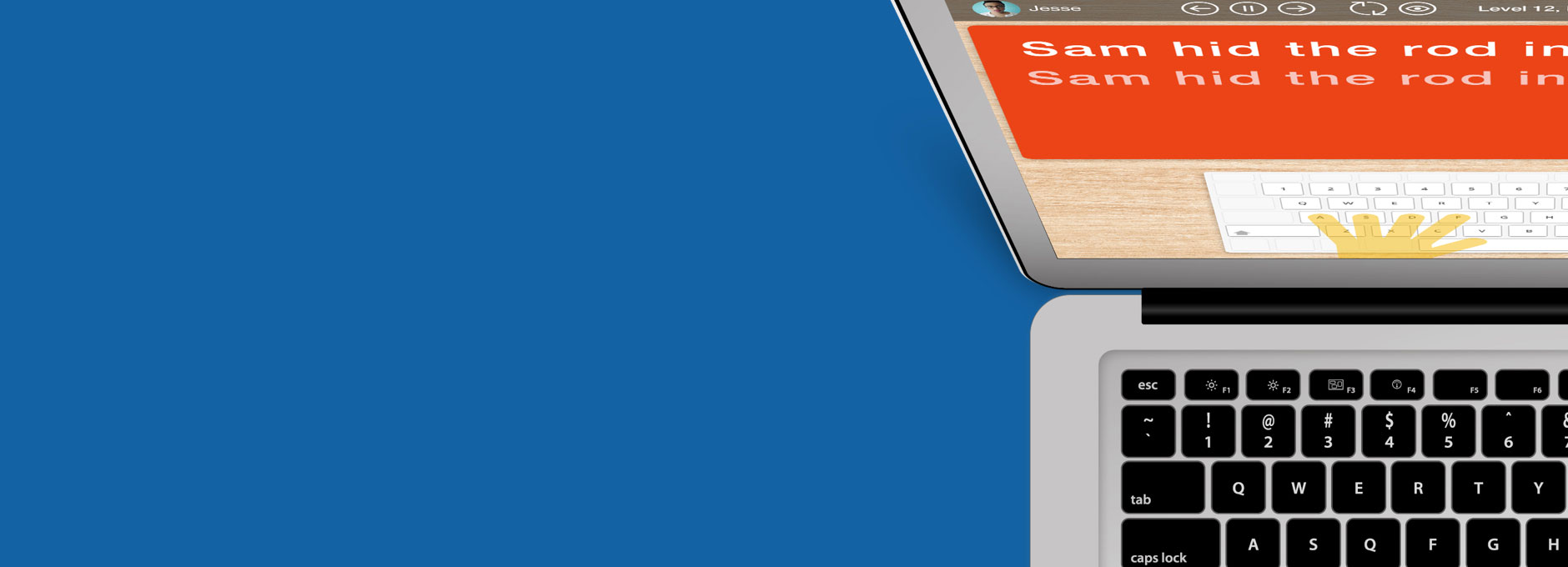For over 25 years, TTRS has offered a comprehensive touch-typing course based on a structured program of phonics. The program aims to build literacy skills and increase confidence and self-esteem in users as they master the art of keyboarding. Because it takes a multi-sensory approach to tuition, TTRS is also suitable for users who struggle with physical impairments and specific learning difficulties, like dyslexia.
TTRS Overview
- Designed to encourage success from the start
- Highly structured yet flexible approach
- 24 course levels, each of 31 modules - 4,500+ words
Reading - Writing - Spelling
- Phonics program supports decoding skills in reading
- Repetition, free-writing, and dictation exercises develop writing fluency
- Muscle memory in the fingers used as a spelling aid
Self-Esteem, Motivation and Confidence
- Can enhance self-esteem for individuals with a history of educational failure
- TTRS is appropriate as a typing course for children age 7+ and adults who wish to learn the skill of keyboarding.
Computer Keyboard Skills
- Keys introduced sequentially following a phonics program
- Small, incremental steps delivered at the pace of the learner
- Multi-sensory learning - students see, hear and type each word
Dyslexia-Friendly Learning
- Structured wordlists based on the book 'Alpha to Omega'
- Multi-sensory Orton-Gillingham approach to reading and spelling
- Sight words, uppercase letters, punctuation and whole sentences
TTRS is designed to benefit:
- Students who experience spelling, reading or writing difficulties
- Adults who want to learn typing and/or require help with their literacy skills
- Students learning English as a Second Language (ESL)

How does Touch-type Read and Spell work?
TTRS is modular in design and contains 24 levels with 31 modules in each level. A module typically takes a few minutes to complete. Student success is encouraged by immediate feedback and positive reinforcement. This feedback includes a score that appears at the end of each module.
The course starts with students learning to touch-type, read and spell the vowels - " a, e, i, o, u ." The audio track accompanies the letters as they appear on the screen, reinforcing sound-letter correspondence, which is a crucial skill for sounding out words in reading. The student then receives their first score - and success!
In the second module, the student is introduced to words grouped by onset, vowel-blend, and final consonant. For example - fed, wed, led. This teaches phonics in context and at the same time, the student is learning how to touch-type. With repetition, these words move from short-term to long-term memory.
Every 5th module is a dictation module that removes the visual element encouraging the student to listen to the words and then type out what they hear. This reinforces the words introduced in the previous 4 modules. It also develops spelling by testing sound-letter mapping skills.
Some students with dyslexia have problems with their short-term memory. Repetition is a way of “over-learning” which can help with these problems. TTRS uses a multi-sensory approach to repetition learning.
Through the multi-sensory approach, students hear the words using headphones, see the words printed on the screen, and are prompted as to which fingers to press via the on-screen keyboard.
Finally, through the sense of touch, they type out the words and learn to “spell with their fingers.”
It's like talking with my fingers. When I want to spell a word, I just think where my fingers would go.

